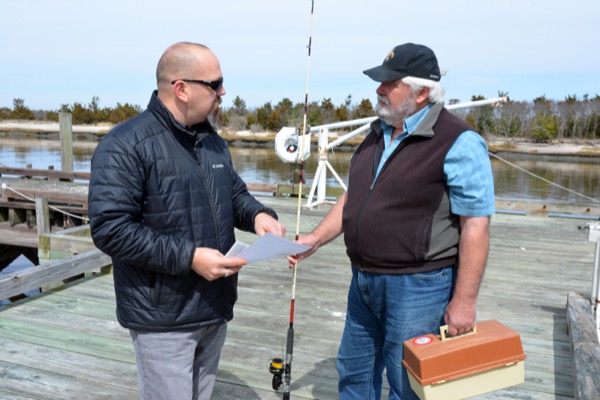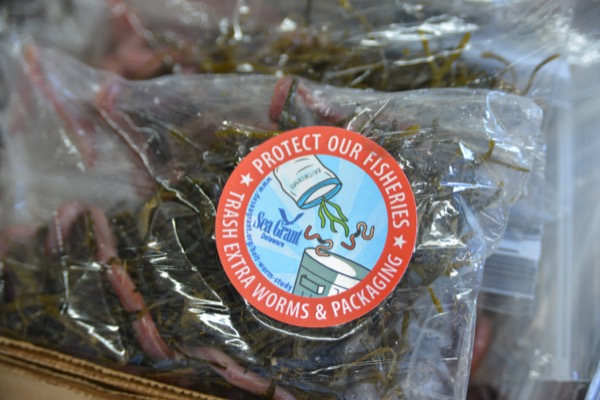


Protecting Mid-Atlantic waterways
Delaware Sea Grant, partners work to prevent introduction of non-native species
4:12 p.m., May 13, 2015--At the end of a long morning, a Mid-Atlantic fisherman packs his tackle box and upends his bait bag into the water, releasing any remaining worms and seaweed used as packing material back into nature. While this may seem like a natural course of action, it could actually put the local ecology at risk.
Tumbling into the water along with this seaweed can be tiny crustaceans, snails and other hitchhiking organisms unintentionally harvested and shipped with the seaweed from Maine. When these northern organisms get into Mid-Atlantic waterways, they can take up residence and compete with the native species that live there.
Campus Stories
From graduates, faculty
Doctoral hooding
“Invasive species are a growing problem, and we have plenty of examples of them on land and in the aquatic environment,” said John Ewart, an aquaculture specialist with Delaware Sea Grant (DESG).
Ewart is initiating an outreach campaign encouraging local anglers to throw leftover bait and packing seaweed in the trash instead of in waterways. This one simple change, he said, can help prevent the introduction of non-native and potentially invasive species.
The project is part of a collaborative effort between Delaware Sea Grant, which is housed in the University of Delaware’s College of Earth, Ocean, and Environment, and partners at the Smithsonian Environmental Research Center, University of Maryland at College Park, University of Wisconsin at Madison and five other Sea Grant College programs in the Mid-Atlantic region.
Together, the institutions are working to understand invasive species in the bait worm trade, and how anglers and researchers can respond to the potential threats they pose.
Funded by DESG, Ewart talked with local anglers and distributed informative materials to local bait shops, including posters, pamphlets and stickers that can be placed on bait bags. He delivered about 1,000 of these stickers to three bait shops in Sussex County, Delaware, and distributed an additional 350 stickers to anglers in a recent fishing tournament.
Collectively, the three bait shops Ewart worked with sell upwards of 15,000 dozen bloodworms each fishing season, creating 15,000 opportunities to educate the public about the easy but important change all anglers can make.
Ewart is now working to reach other shops and develop new outreach tactics. One developing idea is to create sturdier, weather-resistant stickers that can go on more permanent surfaces like tackle boxes. Bait bag stickers are temporary and get thrown out quickly; tackle box stickers, however, are longer lasting and can serve as a constant reminder to both the fisherman who owns the box and others to trash instead of toss.
A survey of Mid-Atlantic anglers revealed consistent support for the project.
“We asked them, if there was something they could do to help, would they do it? And they all said ‘yes’ collectively,” Ewart said.
Outreach, he continued, becomes increasingly important as commerce becomes progressively global, creating new ways for species to migrate to other environments.
Similar to the way that public transportation carries many different travelers — from commuters to families — from one place to another, the bait worm trade can also transport more than one invasive species along its route down the East Coast, allowing them to hop off at different stops along the way.
Instead of investigating each species individually, Ewart and his partners have been working to better understand the bait worm trade as a whole, in order to proactively reduce the potential for non-native species introduction and invasion.
Ewart concluded, “When anglers make the decision to trash their leftover bait and packing seaweed instead of dumping them overboard, they are making the decision to help keep Delaware’s waterways natural, clean and healthy.”
To learn more, visit the website.
Article by Caren Fitzgerald









